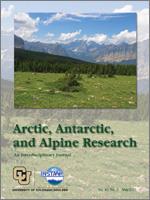Wet sedge tundra communities in the High Arctic are valuable sources of forage for several resident and migratory herbivores; however, the effects of grazing on these systems have been rarely studied. We simulated grazing in two wet sedge meadows at a site on Ellesmere Island that has not been affected by grazing. Over two summers, we clipped plots at four different frequencies and removed litter to assess effects on aboveground net primary production, availability of soil nitrogen, shoot concentrations of carbon and nitrogen, and soil temperature and moisture regimes. Available soil nitrate and ammonium were highest in plots with intermediate clipping frequencies. Shoot nitrogen concentrations were also greater at intermediate clipping frequencies in two of the four species studied. Aboveground net primary production decreased after clipping, regardless of frequency. Litter removal resulted in slightly increased soil moisture, but had no effect on aboveground net primary production. Soil temperature was not affected by any of our treatments. These results suggest that nitrogen cycling is stimulated by intermediate frequencies of simulated grazing, but clipping decreased aboveground net primary production in ungrazed high arctic wet sedge tundra.
How to translate text using browser tools
1 May 2011
Effects of Simulated Grazing in Ungrazed Wet Sedge Tundra in the High Arctic
Tammy L. Elliott,
Gregory H. R. Henry





